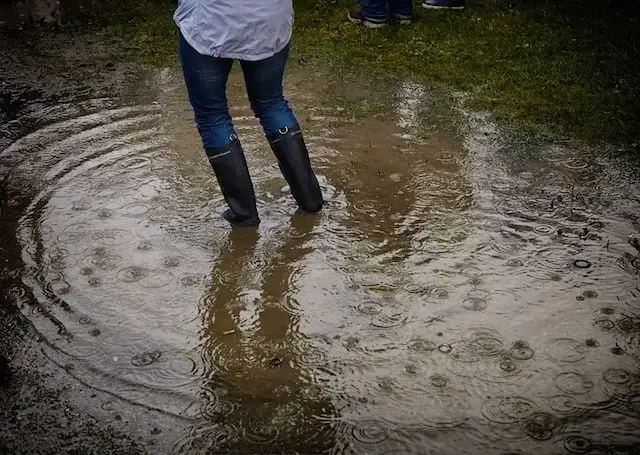Types of Stormwater Drainage Solutions
Have you ever felt anxious during a storm or heavy rainfall, fearing that your property might get flooded? If you have, there's a solution that can ensure the safety of your property from the potential flooding risks. One of the main culprits of flooding can lie in your stormwater system, particularly if there is a blockage. So having a well-designed stormwater system offers efficient rainwater management, even during severe rainfall events. Once rainwater reaches the ground, it's essential for it to rapidly disperse away from buildings through a reliable network of drainpipes or disperse into nearby surfaces. Stormwater pipes should facilitate the uninterrupted flow of rainwater towards the street or the local council's stormwater system. The benefits of implementing effective stormwater drainage solutions include safeguarding your property, and backyard as well as contributing to environmental protection.

Environments that benefit from efficient stormwater drainage
Stormwater drainage solutions become essential wherever the management and regulation of rainwater or stormwater runoff are required to eliminate flooding, erosion, pollution, and associated concerns. Residential areas, in particular, prioritise stormwater protection due to the potential for substantial water damage and the high expenses associated with water-related repairs. However, various other scenarios also require the implementation of stormwater drainage measures to ensure the safety of people, property, and and environment.
Residential areas:
Residential properties need stormwater drainage solutions to prevent waterlogging and protect the structural integrity of buildings and properties. This includes the installation of gutters, downspouts, and underground drainage systems to redirect rainwater away from foundations and basements.
Industrial and commercial sites:
Industrial facilities, warehouses, factories, and commercial buildings often require stormwater management systems to comply with environmental regulations and prevent pollution. This can involve the use of detention ponds, retention basins, oil-water separators, and other techniques to control runoff and filter pollutants.
Urban areas:
In urban settings that are highlighted by paved surfaces like roads, parking lots, and sidewalks, stormwater drainage systems are indispensable. They serve the critical role of preventing flooding and effectively managing the substantial volume of rainwater that can accumulate.
Construction sites:
In construction or development projects effective stormwater management is paramount in averting erosion, sedimentation, and the release of construction-related contaminants into neighboring water supplies Temporary measures, such as sediment traps, silt fences, and erosion control methods, are frequently used until permanent drainage systems are fully established.
Agricultural areas:
In farming and agricultural settings, the need for stormwater drainage solutions can assist in regulating water flow and address soil erosion. Strategies such as contour plowing, terracing, and the creation of constructed wetlands can be beneficial to manage runoff and preserve water for irrigation needs.
Roadways and highways:
Stormwater drainage systems play a critical role in road and highway infrastructure by preventing water buildup on the road surface, this is instrumental in preventing potentially dangerous driving conditions. Commonly used methods for directing water away from roadways include storm drains, culverts, and ditches.
Common problems with stormwater systems
Problems with the stormwater system, mainly when there is a blockage can cause a huge range of issues including flooding, water damage to your home, and erosion in the garden or surrounding land.
Issues can occur when:
- There is an excess of debris such as dirt and leaves on the roof.
- Gutters or downpipes are blocked or damaged - overflowing rainwater from gutters can work into your home’s walls and ceiling space causing water damage and mould growth.
- Stormwater drains on your property are blocked - even a partial blockage can interrupt the flow enough to cause rainwater to back up resulting in flooding.
- The council stormwater system is blocked.
- Drains are leaking - broken or leaking drainpipes allow water to escape creating boggy areas in your property as well as letting dirt, tree roots, and garden debris into the pipe creating blockages.
Varieties of stormwater drainage systems
There are a range of effective stormwater drainage options to suit most situations, and consulting with a professional to determine the most suitable solution for your needs is recommended. Several factors must be considered, including existing conditions, specific area requirements, and local regulations.
-
French Drains
French drains protect your home and lawn by removing excess moisture from the soil. French drains are one of the most effective solutions for draining away excess water. They are simple drainage solution that is efficient without breaking your budget. French Drains are installed to move water that is underground and to direct it away from the foundation of your property. They are a channel drain system that collects water down the full length of the drain, as opposed to just being limited to a specific area.
-
Trench Drains
Trench drains, also known as channel drains, are a drainage system that utilises a continuous long trench to divert water away from problem areas. In this instance, we are referring to trench drains outside your property to divert stormwater runoff away from the building and lawns. The trench, or channel, is covered by grates made of plastic, metal, or precast concrete, which stops debris from entering and blocking it.
-
Swale
Swales are shallow channels or ditches that are designed to collect and convey stormwater. They are typically lined with vegetation or gravel to slow down the flow of water, allowing it to infiltrate into the ground.
-
Stormwater Drainage
Stormwater is the runoff from rain that flows off a house or building site, non-porous surfaces such as roads, driveways, etc to prevent the water from soaking into the ground managing stormwater is essential to protect water quality, reduce the risk of damage to your property and prevent soil erosion and the risk of flooding
-
Stormwater Pit
Stormwater pits provide the perfect resolution for managing peak drainage demands as runoff flows into the pit, where it is collected and contained. The pit design then allows stormwater to be released into drainage pipes at a controlled rate.

Don’t wait until the next storm to get help!
If the stormwater on your property is not being removed efficiently and effectively when it rains contact Everyday Plumbing and Gas Services to book a drain inspection on 0488 801 008 or complete our easy online booking form.